Table of Contents Show
On paper, Ted Lasso shouldn’t work. A show focused on a midwestern college football coach moving across the Atlantic Ocean in order to coach soccer, a sport he’s never played nor has much knowledge about, in London seems like it would be chock-full of testosterone, tired tropes, and unfunny dialogue. Yet the Apple TV smash hit is picking up major awards, including a Golden Globe for star Jason Sudeikis’s performance as the titular character. A quick search of the show on Twitter reveals nothing but praise for the first season from avid soccer fans and those who, like Ted Lasso himself, don’t even know what offsides means, alike. It would take an internet archaeologist to dig up a negative review.
But why makes this show so spectacular? Surely not the games and practice sessions, the age-old message of teamwork, or the locker room scenes that seem to be in every piece of sports media? Surely not the premise of a bumbling American changing the entire fabric of an English soccer team? The answer to this question is both simple and extremely detailed; every component of what makes a tv show successful is present in all ten episodes. Ted Lasso kicks the streaming competition away in every category, from the characters to the writing to the plot.
Ted Lasso-A Positive, Yet Imperfect, Protagonist
When you think of a football or soccer coach, the image of a screaming man racing down the sidelines probably comes to mind. This imaginary coach may throw things in anger. He may berate the players for tiny mistakes, or even give up on those who are harder to coach than others. But Ted Lasso, the newest hire at AFC Richmond, isn’t that imaginary coach. His talent comes from his molding of the athletes into the best versions of themselves possible. He’s a players’ coach first and foremost, and that’s a massive reason why he breaks through to the team.
Ted Lasso relies on his positivity and optimistic attitude instead of anger and screaming like so many professional coaches do. He may not know much about the game of soccer, but he knows his players. He goes out of his way to figure out what motivates them. He reads them carefully before doling out some good old-fashioned-middle-aged wisdom and tells each player what they need to hear, not what they want to hear. He truly wants what’s best for each one of them, even though they’re all skeptical and some are even downright rude to him upon his initial arrival. Despite every obstacle he encounters in his personal and work life, Ted Lasso remains overwhelmingly optimistic, kind, and dedicated to the team and every member of it.
Unbeknownst to him, the new manager of the club, Rebecca Welton, hired him on purpose. After a nasty divorce from her cheating ex-husband, she got to keep and take over the team. She wants to make her ex suffer by sinking AFC Richmond-thus destroying the thing he loves most. But even through these efforts of sabotage, Ted still connects with and improves his players and the Greyhounds for the better. That Lasso positivity and belief in his team as a unit and as individuals pays off, both on and off the field. Richmond’s win/lose percentage reflects that, but so do the subtle and glaring changes the characters make as well, changes that never would’ve happened if it weren’t for the mustached, mindful coach.
Every Character Grows
Whether it’s grumpy, veteran team captain Roy Kent or the showboating, young rising star Jamie Tartt, or girl-boss and always-serious manager Rebecca Welton, or the reserved locker room attendant Nathan Shelley who knows soccer better than anyone else on the show, every character in Ted Lasso grows as the season goes on. The characters who Ted meets in the pilot are changed for the better by the season finale, thanks to him and each other. Having realistic characters who organically change is a goal on any writing team’s checklist when sitting down to create a script. The Ted Lasso team accomplished this feat in only ten episodes.
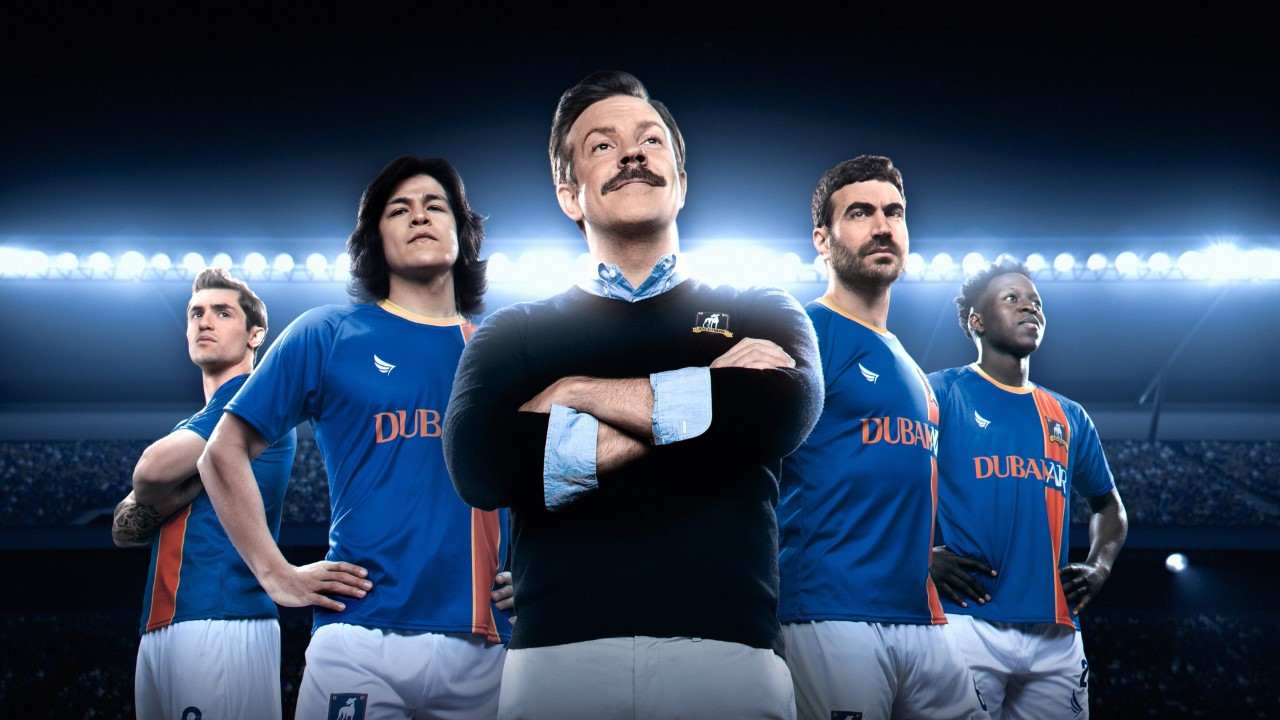
While the characters may evolve throughout, their core personality remains the same. Roy still grunts when he’s displeased (so basically every few minutes). The sweet model Keeley Jones still charms everyone she comes into contact with, and Jamie’s talent and overconfidence in that talent never wane. Still, everyone becomes a better version of themselves. The attention to detail in terms of character growth is astounding on Ted Lasso. No character decision or lesson they learn goes to waste. Every seed that gets planted throughout eventually blossoms into a full-circle moment for the characters, with even more growth waiting to be had in seasons two and three.
Not every character in a piece of media needs a complex arc or a detailed story. It’s just harder to get attached to one who remains stagnant and shows little positive change throughout. It isn’t until you get a glimmer of Jamie’s backstory that you may rethink your opinion on him. It isn’t until you see Ted get frustrated or downright sad that you realize he isn’t positive and happy all the time. Ted Lasso is simply a man trying his best to help others each and every day. Growth isn’t linear, and having characters regress in the betterment of themselves or make mistakes isn’t bad writing. It’s realistic. Becoming a better person takes work, and the writers of Ted Lasso clearly put in overtime to make sure the effort each character puts into their athletic ability and outlook on life is felt.
No One Gets Lost In The Crowd
Roy Kent may be a softie behind the layers of facial scruff and a prickly outer shell. Underneath the cocky exterior and selfish attitude, Jamie Tartt is emotionally damaged and deeply hurt. Below the sky-high blonde ponytail and dozens of social media followers of Keeley Jones lies a thoughtful and caring woman. When Rebecca Welton lets her guard down, she’s a lonely, heartbroken woman who was burned so badly she still feels hurt every time her ex walks into the room. When he’s not washing towels or filling water bottles, Nathan Shelley is thinking of genius soccer plays and ways to roast the players into performing better on the pitch. And Ted Lasso may be the epitome of human sunshine, but even he has his moments of self-doubt, anger, and frustration. Each character’s unique traits and hidden layers make them feel all the more real.
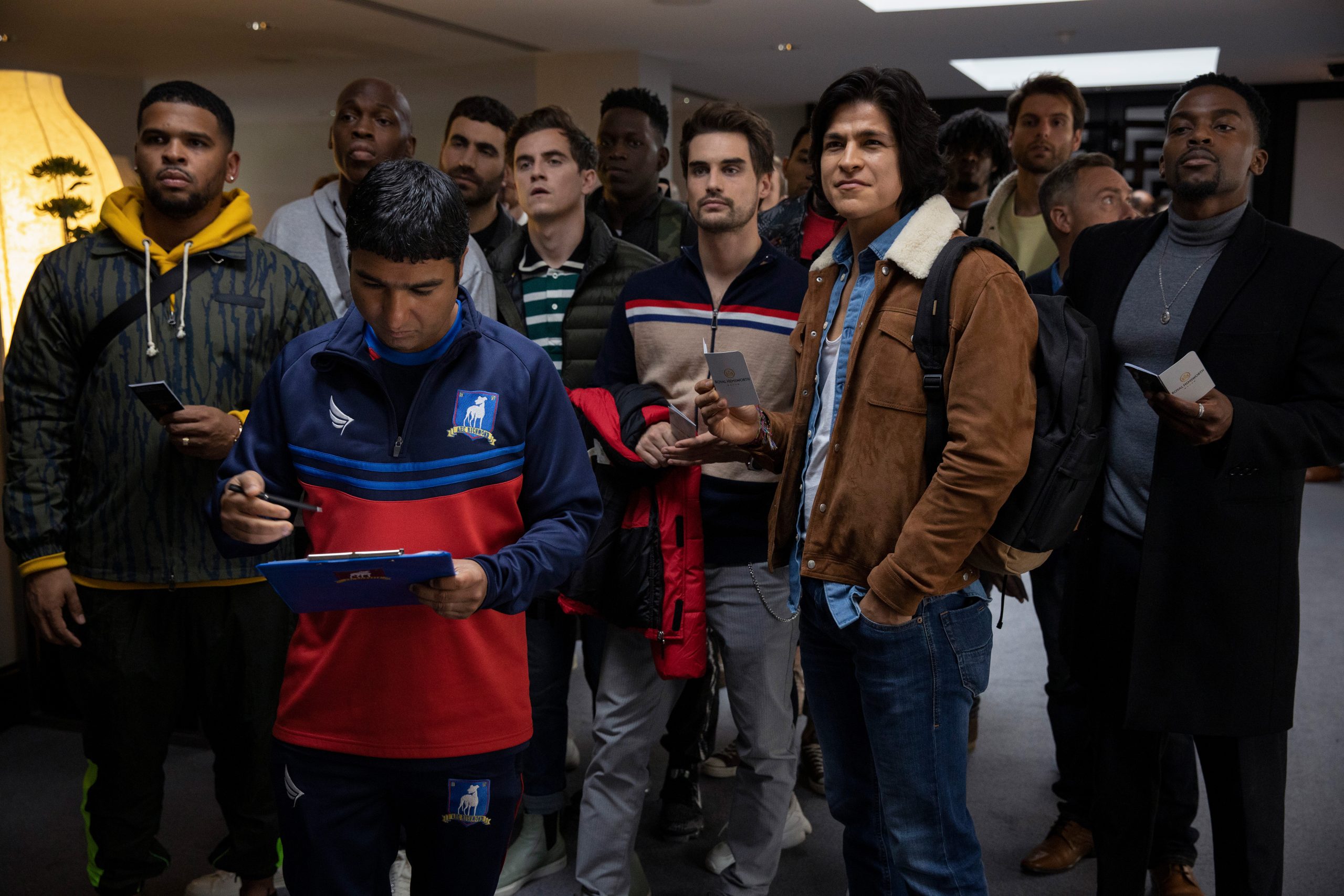
No character fades into the background and obscurity. Even the side characters also have unique personalities. The kind-hearted but unsure of himself on the field Sam Obisanya, cheerful and always undeterred Dani Rojas, and Rebecca’s smart but somewhat submissive assistant Leslie Higgins all prove to be memorable and likable. Even the men who berate Ted on the tv of the local pub they frequent stick in the memories of those watching. While the cast of characters on Ted Lasso could fill multiple soccer club rosters, no one gets lost in the crowd. Every character is memorable in their own way. Each one may appear to be a cliché, from the ditzy model to the dumb jock, but every character subverts expectations, again, in their own ways.
Characters serve as the foundation for any piece of media. An unexpected plot twist or good pacing can help solidify the plot of a show in the viewer’s mind, but it’s the characters audiences grow attached to. It’s the characters we watch rise and fall, who we follow through their ups, downs, and everything in between. The glimpses we get into their lives, their quirks and ticks, and their stories are why we want to know what happens in the next episode or chapter of a book. Ted Lasso excels in fleshing out its cast of characters and making sure they remain in the hearts and minds of those watching.
The Bechdel Test Gets Smashed To Pieces
Bubbly social media influencer Keeley Jones and the frosty businesswoman Rebecca Welton couldn’t be more different. And yet, their friendship becomes one of the strongest on the entire show. Keeley constantly hypes up her new friend, complimenting her appearance and teaching her how to pose for red carpet photos properly. She helps Rebecca through her divorce. Rebecca tells Keeley she needs to be with a romantic partner who’s accountable for their mistakes and offers her a PR job with the team that Keeley thrives in. Both women look out for each other and want what’s best for the other. There’s no jealousy, no backstabbing, and no male-centered drama between them.
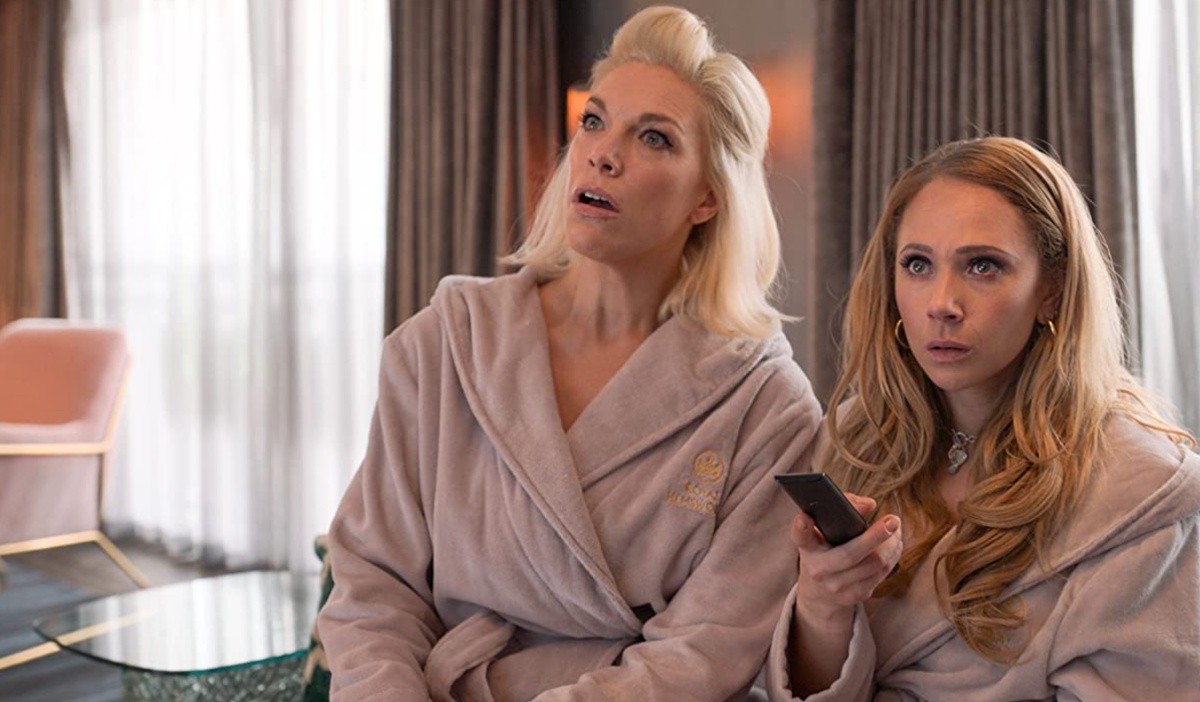
In episode seven, when Keeley and Rebecca room together at a hotel in Liverpool for an away game, Rebecca’s childhood friend Flo shows up unexpectedly. Instead of Keeley becoming jealous or downright mean, she welcomes Flo right away and gets along with her swimmingly. Keeley’s always eager to make a new friend and meet a new woman. The morning after she and Jamie break up, Keeley heads to his house to return a key, only to be greeted by a random woman Jamie slept with the night before. The writers could’ve easily turned this scene into a petty fight between two women. But instead, Keeley and the woman are cordial and kind to each other, with the latter even confessing to following Keeley on social media and being a fan of hers. Keeley tells the woman it was nice to meet her before leaving, and she genuinely means it. Keeley is never cruel to other women, no matter the circumstances.
It may be 2021, but the writing for female characters can leave much to be desired on streaming and cable shows alike. A program with a male character as the lead and with a lopsided ratio of men to women like Ted Lasso might be met with raised eyebrows. But the high-quality writing each woman receives somewhat makes up for that. Like in real life, no two women on the show are exactly the same, and their individual strengths and weaknesses make them feel fully developed. With Sarah Niles joining the cast for season two, the possibility of even more scenes featuring strong and well-written female characters interacting looms on the horizon.
Adults Communicate Like, Well, Adults
From a potentially messy love triangle to an elongated feud between Rebecca and her newest hire, Ted Lasso had numerous opportunities to use miscommunication as a plot device. While this trope is most prevalent in rom-coms and teen dramas, it had a chance to take center-stage as the central conflict for this sports comedy. Keeley could’ve been torn romantically between Jamie and Roy all season long, hurting all three of the characters emotionally by lying and hiding what she does with one man from the other. Rebecca could’ve bottled up her marital issues and the pain tabloid scrutiny caused her all season and never properly apologized to Ted for hiring him to sink the team. But the writers respect the characters and the audience too much to fall into this trap.
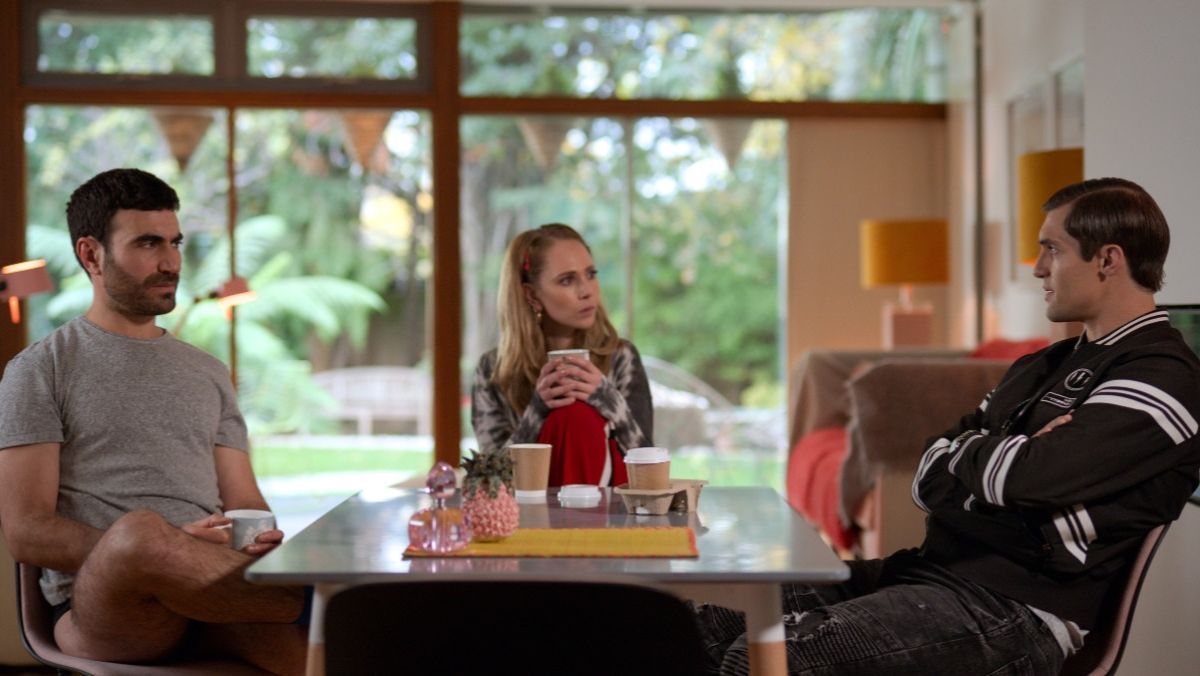
Communication is key to any healthy relationship, romantic or platonic. And while people certainly misinterpret overhead sentences or have moments of miscommunications in real life, it doesn’t happen nearly as much as Hollywood leads one to believe it does. The show’s writers didn’t take the easy way out when it comes to throwing obstacles in the cast’s way. Instead, the adults communicate like adults. Sure, everyone makes the occasional mistake, but conversations are always had soon after. There’s even a scene of adult men discussing romantic feelings and issues they’re having honestly and openly with each other, with Ted and Roy seeking advice from the others. Seeing men engage in such healthy communication about feelings is tragically rare in media, and seeing it in a show about a sport at its core is even harder to find.
Ted Lasso lets its characters tell the truth, apologize when they’re wrong, and learn from their mistakes. Taking accountability becomes a major running theme. Keeley and Roy always genuinely apologize to one another when they hurt the other or do something wrong. When Ted has a rare moment of snapping at Nathan, he makes sure to say sorry to the locker room attendant first thing in the morning. Ted Lasso’s apologies mean something because the characters say they know what they did wrong and want to take the first step in making things right. Communicating, apologizing, and working through issues is not only refreshing to see from a cast of characters, but it adds a layer of maturity to this hidden gem of a tv show.
More Than A Game
While I’ll tune in to watch a World Cup game or two, and I’ll play the occasional pickup game with friends or family, I’m not much of a soccer fan. I have nothing against the sport; it’s just not my personal favorite to watch or play. But the love of the game doesn’t have to correlate with the love of the show. If you go into Ted Lasso with limited, or negative, knowledge of soccer, congratulations, so does the titular character! You’re not alone in lack of soccer knowledge, and along the way, you may even learn a thing or to, just like Ted Lasso himself.
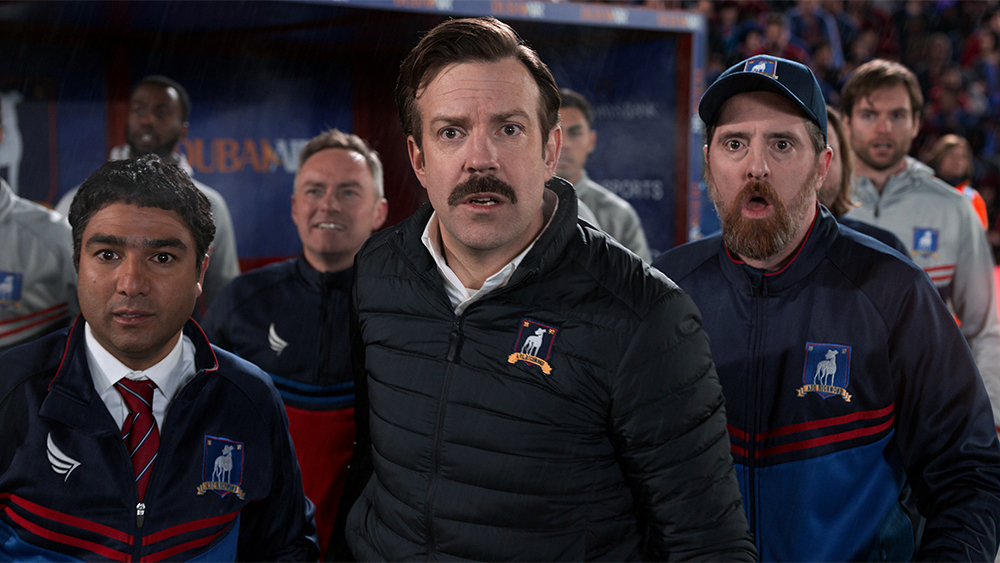
The practice and match sequences are brief, and they focus more on character interactions and how everyone is feeling more than the actual goals and penalties. The creative camerawork and strong acting also pull you into what’s happening on the field or pitch as it’s called across the pond. The match in the season finale is pivotal to the future of AFC Richmond as a club, and by the time you get there, you’re on the edge of your seat. Every kick of the ball, every attempted shot, and every minute of the game will have you glued to what’s happening on screen. For a moment, you forget AFC Richmond isn’t a real soccer team. You forgot you’re on a streaming service and not watching ESPN.
Like every great fictional sports story, the heart of the show doesn’t lie in the players’ stats or whether or not the team actually wins the big game. It’s about that team bonding and connecting on a deeper level, persevering despite the odds stacked against them, and above all, taking the lessons they learn outside of the sports world and applying them to real life. Ted Lasso succeeds in all three of these sport-media staples. Without the time the narrative spends on developing the characters and building the bonds they have with one another, whether or not the Greyhounds win the final match wouldn’t matter to the audience. The show is about more than a game, and some of the best moments happen off the pitch rather than on.
What Do You Have To Lose?
Even if you’re still on the fence about Ted Lasso, the first two episodes are free to stream. Trying this show on for size will cost you nothing but some time. When you finish whatever’s in the ‘currently watching’ section of your Netflix or Hulu account, or you’re not in the mood to pick a random episode of a show you’ve seen at least twenty times by now, these ten episodes are worth giving a shot. After all, switching off a program you’re no longer enjoying only takes a click or two. What do you have to lose by stopping by the AFC Richmond locker room for a little less than half an hour?
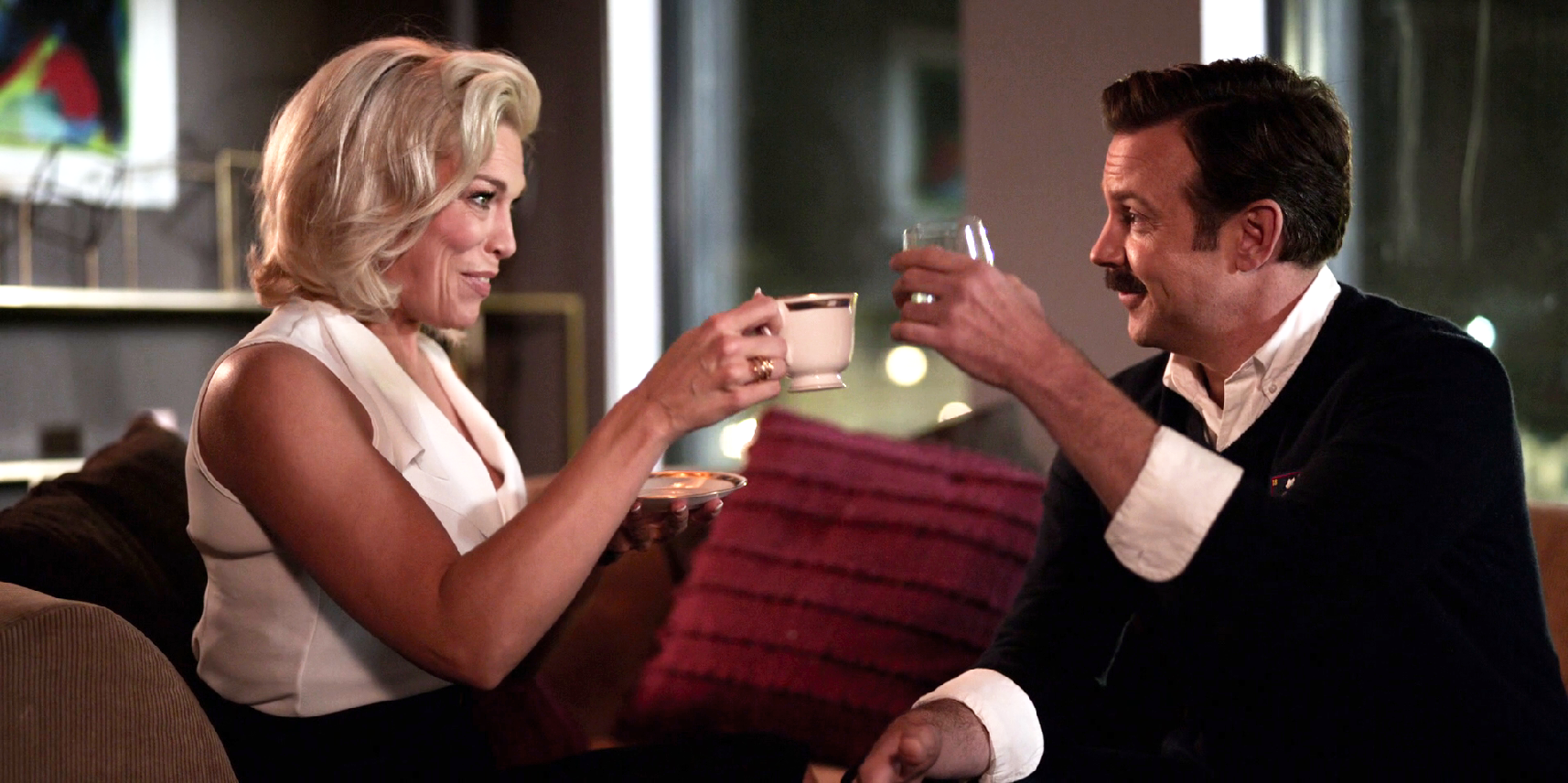
Giving a show a try, despite whatever preconceived notions you may have about it, can lead you to find a new favorite or even help you better recognize what you do or don’t like on television. It’s like Ted says during a riveting game of darts, “Be curious, not judgmental.” Go into this unexpected gem of a show with an open mind. We can all use a little more positivity, a little more hope, and season one will give you both of those things and more. If you need a long, warm hug after the tumultuous past twelve months, ‘Ted Lasso’ awaits you with open arms.
Season one of Ted Lasso is now streaming on Apple TV.
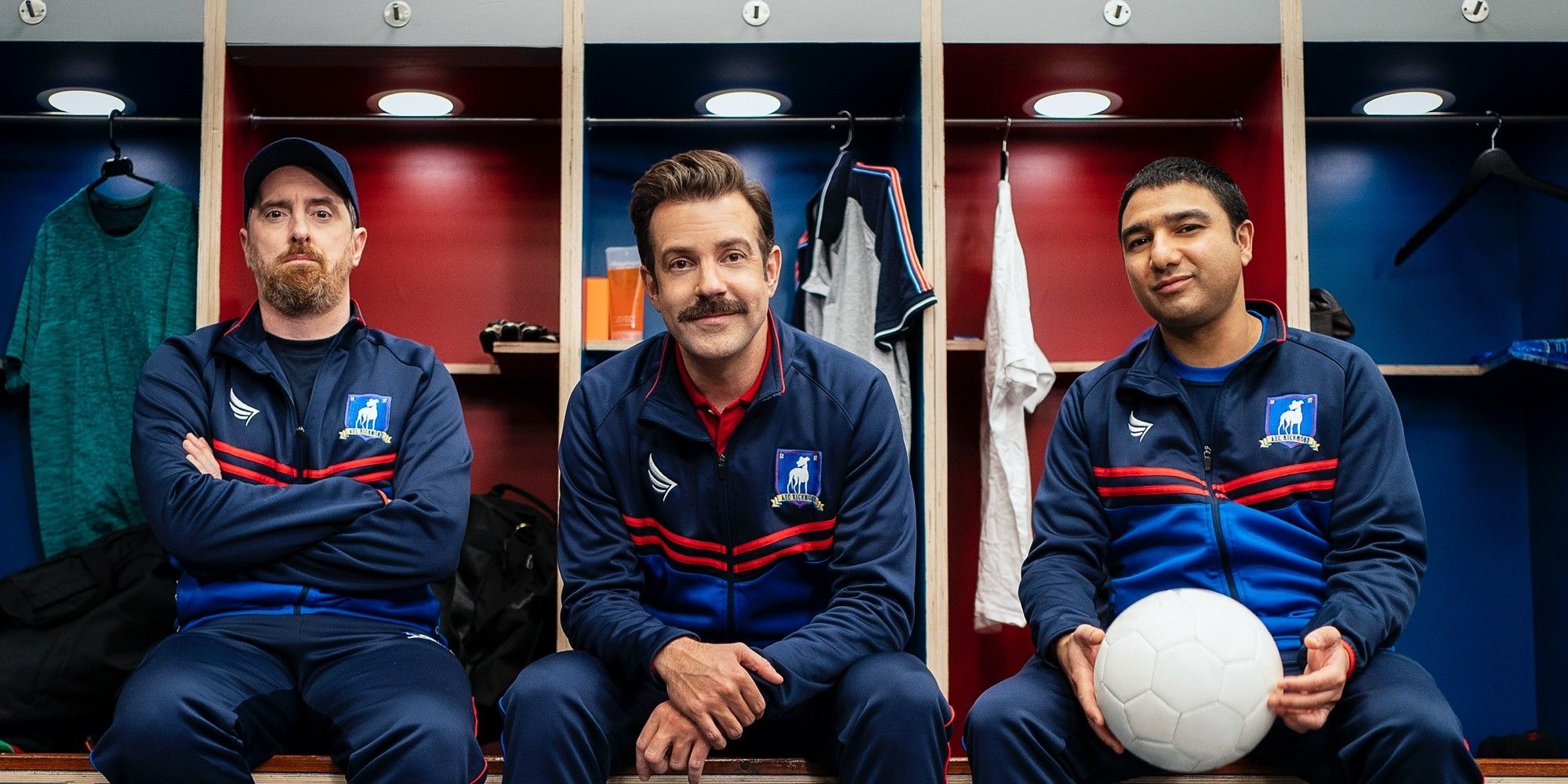
LOVE!!!!